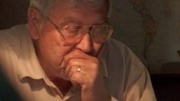Template:Article of the moment
From Gunsopedia
Leroy James Sullivan, is an American firearms inventor. Going by Jim Sullivan, he is noted as the designer of several 'scaled-down' versions of larger firearms. He is largely responsible for the M16, Stoner 63, and Ruger Mini-14 rifles (scaled from the AR-10, Stoner 62, and M14 rifle respectively) as well as the Ultimax 100 light machine gun and Ruger M77 rifle. Sullivan has recently become very critical of the M16 and M4 rifles that he co-designed.
Usage
Just a list of short article titles for the main page. Use this code to make additions:
<option>{{:}}</option>
